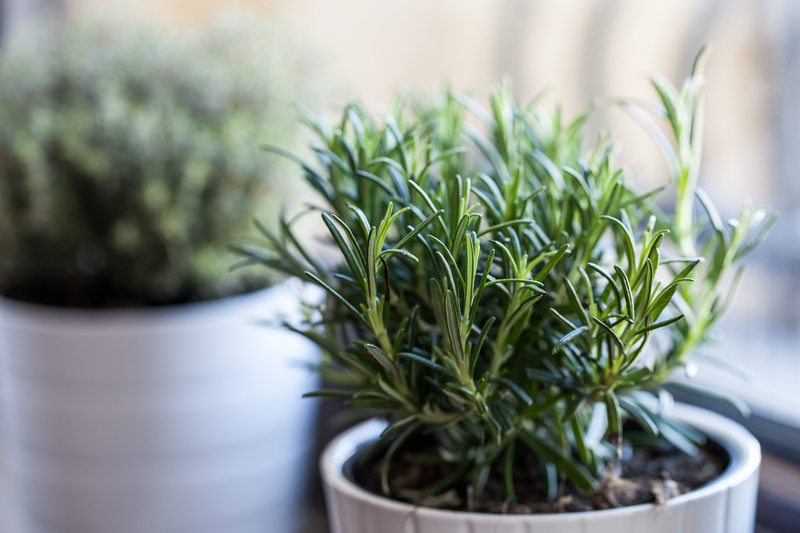Explore the Art of Weed Control with These 3 Tips
Posted on 26/08/2025
Explore the Art of Weed Control with These 3 Tips
Weeds can be the bane of every gardener's existence. These unwanted plants stealthily invade our gardens, flower beds, and lawns, competing with our beloved plants for sunlight, water, nutrients, and space. Yet, understanding how to master weed management isn't just about yanking them out. It's about acquiring the right knowledge, being strategic, and adopting sustainable practices. Are you ready to explore the art of weed control with these 3 tips? Dive in, and transform your landscape into a weed-resistant oasis!

Understanding Weeds: The First Step in Effective Weed Management
Before learning the secrets of weed suppression, let's start by understanding what makes weeds so persistent and problematic in gardens and lawns. Weeds are simply plants growing where they are not wanted. They are resilient, prolific, and often well-adapted to local conditions. Their seeds can remain dormant in soil for years, waiting for the right conditions to germinate. Many spread rapidly via roots, stems, or wind-blown seeds.
- Annual Weeds: Complete their life cycle in one season and rely on prolific seed production (e.g., crabgrass, pigweed).
- Perennial Weeds: Live for several years and regrow from roots or stems (e.g., dandelion, quackgrass, bindweed).
- Biennial Weeds: Take two years to complete their life cycle (e.g., wild carrot, burdock).
To truly succeed in weed prevention and control, recognize your local weed species and their life cycles. Armed with this knowledge, you're ready for the artful techniques that make all the difference.
Tip 1: Use Mulch Strategically for Natural Weed Suppression
Mulching isn't just about making your garden beds look tidy - it's a powerful weapon in weed control. Mulch acts like a protective blanket, depriving weed seeds of sunlight and making it difficult for them to break through the surface. When used properly, it's one of the most eco-friendly and effective ways to minimize weedy invasions.
Benefits of Mulching for Weed Control
- Limits sunlight, reducing weed seed germination.
- Retains soil moisture for your desirable plants.
- Adds organic matter and nutrients as it decomposes (if using organic mulch).
- Helps moderate soil temperature.
How to Mulch for Best Results
- Start with a weed-free bed. Remove all visible weeds before laying mulch.
- Apply a mulch layer of 2-4 inches thick. Too thin and light still filters through - too thick can smother your plants.
- Keep mulch away from stems or trunks to prevent rot or disease.
- Use organic mulches (wood chips, straw, bark, compost) or inorganic mulches (landscape fabric with a decorative cover, gravel) depending on your garden style.
- Replenish mulch annually as needed, especially as it breaks down.
Pro Tip: For paths or non-plant areas, a layer of cardboard or newspaper under mulch adds even more weed barrier power!
Tip 2: Cultivate Healthy Soil for Stronger Plant Competition
Healthy soil doesn't just feed your plants - it also plays a vital role in weed inhibition. When your desired plants flourish, they compete more successfully for resources, crowding out weeds naturally. Conversely, poor soil creates gaps for opportunistic weeds to take root and spread.
Nourish Your Soil - Outcompete Weeds
- Test your soil every few years. Adjust pH and add missing nutrients as recommended.
- Regularly add organic matter such as compost or well-rotted manure to help soil structure.
- Avoid over-tilling, which brings buried weed seeds to the surface and disrupts soil life.
- Plant at the recommended spacing for dense, vigorous growth - leaving fewer empty patches for weeds to invade.
Encourage Groundcover and Dense Planting
The less bare soil, the fewer opportunities weeds have to gain a foothold. For natural weed prevention:
- Choose groundcovers or low-growing perennials to fill open spaces.
- Interplant vegetables or flowers closely (following guidelines) for a living weed barrier.
- Rotate crops annually to disrupt weed cycles.
Remember: Vigorous, well-fed plants create their own shade, making it harder for new weed seeds to sprout!
Tip 3: Practice Smart, Consistent Weed Removal Techniques
Even with the best strategies, some weeds will escape your defenses. Proactive, timely removal keeps them from setting seed and spreading further. Effective weed control methods are about working smarter, not harder - and developing a steady routine.
Hand-Pulling and Hoeing: The Artful Way
- Pull weeds after a rain: Soil is softer, making root removal easier.
- Always remove the entire root system for perennial weeds - many will regrow if only the tops are pulled.
- Use a hoe or weeding tool to slice young weeds just below the surface in dry weather.
- Tackle weeds before they flower or set seed for maximum long-term control.
Smart Use of Herbicides
While the best weed control is usually manual and mechanical, sometimes you may need to use herbicides, especially in tough perennial weed situations or large areas. If so:
- Choose targeted, selective herbicides only for the weed in question.
- Follow all label directions exactly.
- Apply when weather is calm to reduce drift and unintended damage.
- Consider natural or organic products (such as vinegar-based sprays) for eco-friendlier solutions.
Weed Prevention - Stop Problems Before They Start
- Inspect your garden weekly and remove new weeds while they're small.
- Remove weeds from compost piles unless you're sure your pile gets hot enough to kill seeds.
- Clean tools and shoes before moving between different areas to avoid spreading seeds.
Bonus: Advanced Weed Control Strategies for the Ambitious Gardener
Want to elevate your weed control game even further? Here are a few advanced options for those striving toward a truly weed-free landscape:
- Flame Weeding: Using specialized torches, this method kills weeds with intense heat. Best for driveways, cracks, and non-plant areas.
- Solarization: Cover soil with clear plastic during hot weather for several weeks, "baking" weed seeds and pathogens out before planting.
- Cover Crops: In vegetable or annual beds, grow dense, fast-growing plants (such as clover or rye) between main crops to block weeds and build soil.
- Living Mulches: Plant low, robust species alongside crops for continuous soil coverage and weed suppression.
The Art of Weed Control: A Year-Round Practice
Lasting weed management isn't a one-time fix. It's an evolving art based on understanding, observation, and timely action. By implementing the strategies above and making them part of your gardening routine, you'll maintain control over weeds season after season.
- Spring: Mulch early and catch emerging weeds before they seed.
- Summer: Stay on top of weeding and watering to reduce plant stress (stressed plants leave openings for weeds).
- Fall: Remove persistent weeds, compost correctly, and prepare mulch or cover crops for winter protection.
- Winter: Plan new beds and research the most persistent local weeds in preparation for a weed-free growing season.

Frequently Asked Questions About Weed Control
What is the best time to weed my garden?
Consistent, early action is best. Pull weeds when they're small, ideally after rain, throughout the growing season. Never let them flower or go to seed.
How can I prevent weeds naturally without chemicals?
Combine mulching, healthy soil practices, groundcovers, and timely hand-weeding. This integrated method can greatly drop your reliance on herbicides.
Is mulching really enough for weed control?
Mulch is remarkably effective, but it's most powerful when combined with dense planting and soil care. No method is foolproof, so a diverse approach works best.
What should I do with weedy areas too large to weed by hand?
Consider using cover crops, tarping (solarization), and mowing to manage large areas. For aggressive perennial weeds, an initial herbicide application may be needed, followed by restoration planting and ongoing monitoring.
Begin Your Journey: Master the Art of Weed Control Today
Controlling weeds isn't about constant struggle or resorting to strong chemicals. Instead, it's about developing a gardener's eye, creating favorable growing conditions, and intervening with smart, sustainable techniques.
By applying these three proven tips--strategic mulching, nurturing healthy soil, and consistent weeding--you'll not only limit unwanted plants, but you'll also foster a lush, vibrant environment where your favorite flowers, vegetables, or turf can thrive.
Are you ready to reclaim your garden? Explore the art of weed control and watch your landscape flourish, weed-free season after season!

